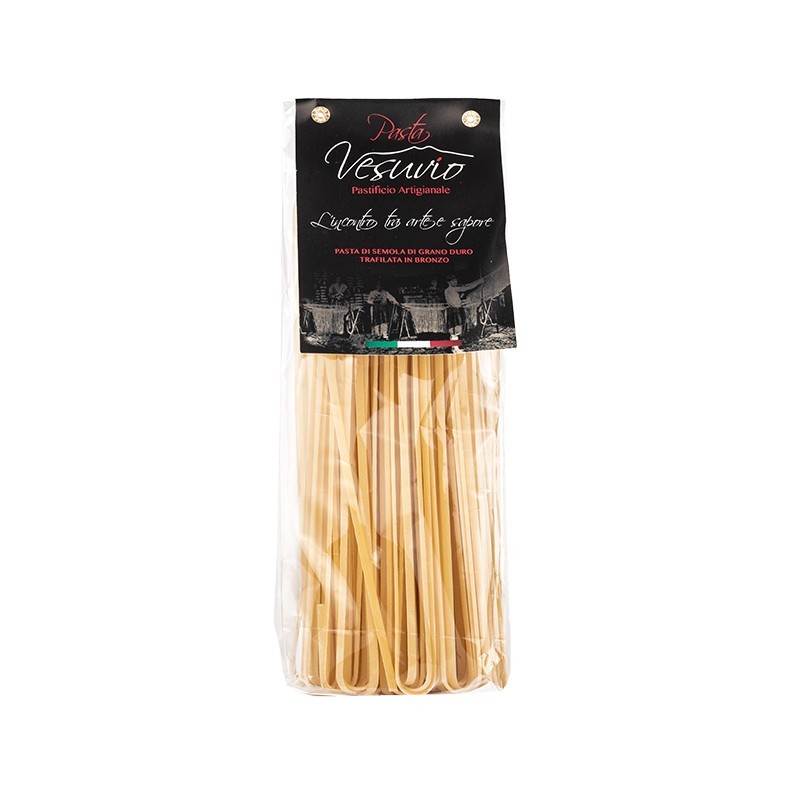




Our artisan linguine are made from Italian durum wheat semolina and spring water from the extinct Roccamonfina volcano. The bronze die extrusion process gives the pasta a rough surface perfect for holding sauces, making it ideal for seafood dishes. The slow drying process at low temperatures preserves the nutritional properties and ensures a perfect al dente texture. These Linguine represent the excellence of the Italian culinary tradition, offering an authentic and high quality taste experience.
Italian durum wheat semolina, spring water from the extinct volcano of Roccamonfina.
Contains Gluten
Few people know that linguine, one of the most popular types of pasta, originated in Genoa in the 1700s. At that time they were the typical festive dish of Ligurian families. Popular tradition has always considered linguine to be the ideal way to enhance the flavours and identity of Liguria, often combined with pesto, seafood or shellfish.
The long, flat shape of the pasta, similar to spaghetti but a little wider and flatter, is perfect for absorbing sauces, especially when it is extruded in bronze, like our artisan linguine. The slow drying process at low temperatures preserves all the nutritional properties of Italian durum wheat and ensures a perfect al dente texture. Linguine are particularly versatile and can be used in a wide range of dishes, from the simplest to the most elaborate, making every meal an authentic and high quality culinary experience.
It may interest you
Linguine is an Italian artisan pasta characterised by its long, flat, tongue-like shape. They are traditionally made with durum wheat semolina and water, which gives them an al dente texture and a unique flavour. Linguine are particularly suitable for fish dishes, thanks to their shape, which allows them to absorb the sauce perfectly.
Linguine is a very versatile pasta, ideal for combining with many different sauces. For example, linguine with clams is one of Italy's favourite seafood dishes, while linguine with pesto is a must for lovers of the fresh, aromatic taste of basil. Popular combinations include linguine with clams, seafood or basil pesto. Linguine with mussels and tomato is another delicacy that combines the sweetness of the tomato with the tenderness of the mussels.
Linguine has an interesting and curious history. It is said that the pasta was born as a result of a fire in an Italian pasta factory. It is said that the scene of the fire inspired the master pasta makers to create a pasta that resembled flames coming out of the fire. Linguine was born, with its long, thin shape resembling tongues of fire. Today this pasta is loved all over the world for its versatility and its ability to combine perfectly with seafood sauces. In fact, linguine is the ideal choice for dishes such as spaghetti with clams or the classic tomato sauce with seafood.